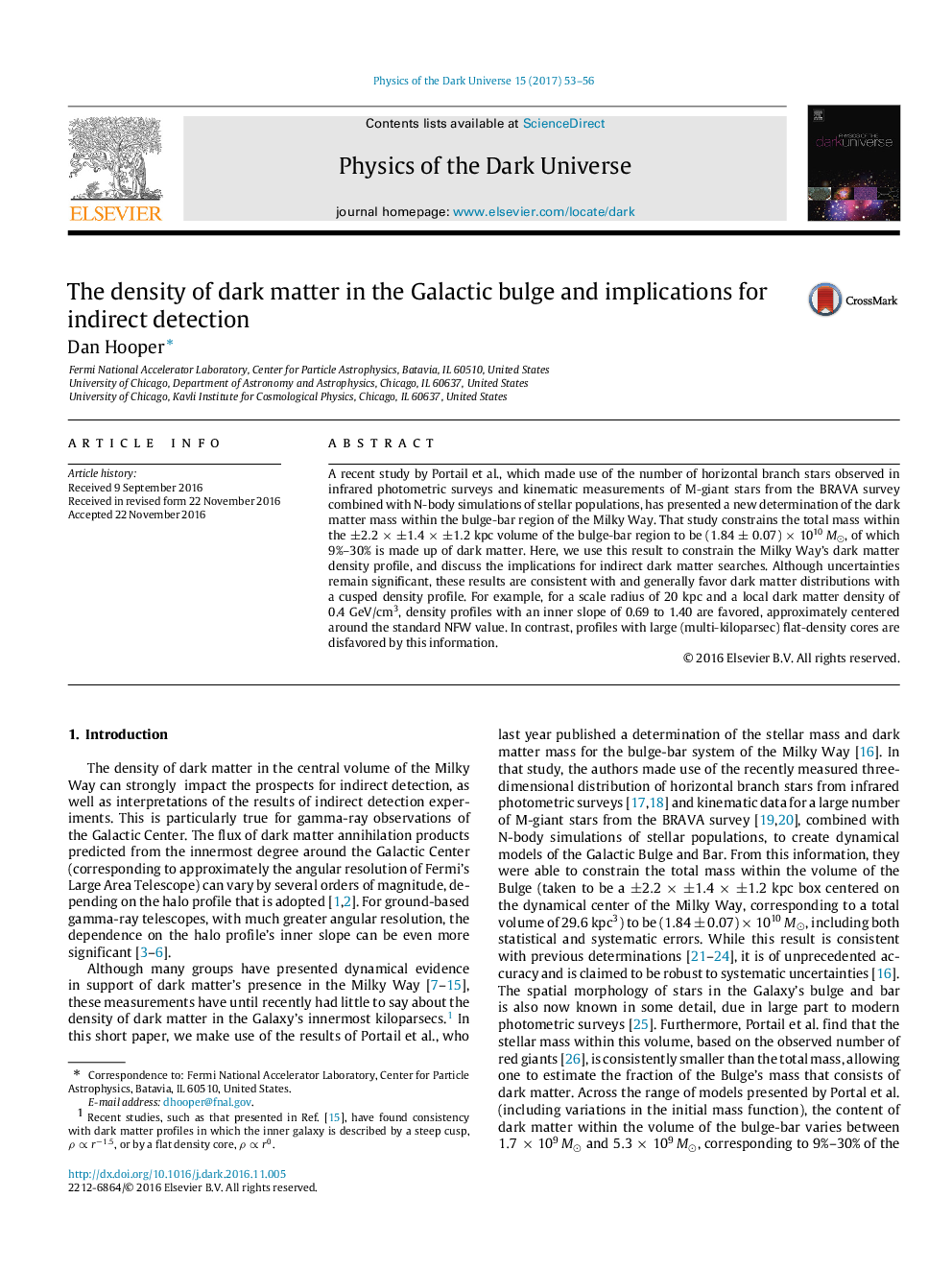| Article ID | Journal | Published Year | Pages | File Type |
|---|---|---|---|---|
| 5487904 | Physics of the Dark Universe | 2017 | 4 Pages |
Abstract
A recent study by Portail et al., which made use of the number of horizontal branch stars observed in infrared photometric surveys and kinematic measurements of M-giant stars from the BRAVA survey combined with N-body simulations of stellar populations, has presented a new determination of the dark matter mass within the bulge-bar region of the Milky Way. That study constrains the total mass within the ±2.2ñ1.4ñ1.2 kpc volume of the bulge-bar region to be (1.84±0.07)Ã1010M?, of which 9%-30% is made up of dark matter. Here, we use this result to constrain the Milky Way's dark matter density profile, and discuss the implications for indirect dark matter searches. Although uncertainties remain significant, these results are consistent with and generally favor dark matter distributions with a cusped density profile. For example, for a scale radius of 20 kpc and a local dark matter density of 0.4 GeV/cm3, density profiles with an inner slope of 0.69 to 1.40 are favored, approximately centered around the standard NFW value. In contrast, profiles with large (multi-kiloparsec) flat-density cores are disfavored by this information.
Related Topics
Physical Sciences and Engineering
Physics and Astronomy
Astronomy and Astrophysics
Authors
Dan Hooper,
